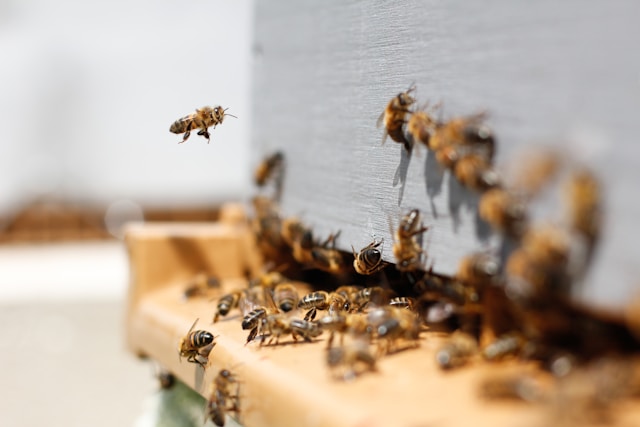Introduction
Starting your own beehive can be a rewarding and fulfilling endeavor, providing not only the joy of working with these fascinating creatures but also the added benefits of fresh honey, beeswax, and a boost to your local ecosystem. Whether you’re interested in beekeeping as a hobby or as a step towards self-sufficiency, this guide will walk you through the essential steps to get started.
Understanding the Basics
Before diving into the practical aspects of beekeeping, it’s crucial to understand the basic biology and behavior of bees. Honeybees live in highly organized colonies with a clear division of labor. Each hive consists of one queen, thousands of worker bees, and a few hundred drones. The queen’s primary role is to lay eggs, while workers maintain the hive, care for the young, and forage for food. Drones exist to mate with the queen.
Choosing the Right Location
The first step in setting up your beehive is selecting an appropriate location. Consider the following factors:
- Sunlight: Bees thrive in sunny locations. Ensure your hive gets morning sunlight to warm up early in the day;
- Shelter: Protect the hive from strong winds and heavy rain. Placing the hive near a natural windbreak like a hedge or fence can help;
- Accessibility: Ensure the hive is easily accessible for you to perform regular maintenance and inspections;
- Distance from Humans: Keep the hive at a safe distance from high-traffic areas to avoid conflicts with neighbors and pets.
Essential Beekeeping Equipment
To get started, you’ll need some basic beekeeping equipment:
- Hive Components: A standard beehive consists of a bottom board, brood boxes, honey supers, inner cover, and outer cover;
- Frames and Foundation: Frames hold the foundation, where bees build their comb. The foundation can be made of wax or plastic;
- Protective Gear: A bee suit, gloves, and a veil are essential to protect yourself from stings;
- Hive Tool: This multi-purpose tool is used for prying apart frames and scraping off propolis;
- Smoker: The smoker calms the bees, making hive inspections easier.
Acquiring Your Bees
There are several ways to acquire bees for your hive:
- Package Bees: These are a popular option for beginners. A package typically includes a queen and several thousand worker bees;
- Nucleus Colony (Nuc): A nuc is a small, established colony with a laying queen, workers, and brood. It’s a bit more expensive than package bees but has a higher chance of success;
- Swarm Catching: Capturing a wild swarm is an adventurous and free way to start, but it’s not recommended for beginners.
Setting Up Your Hive
- Assemble the Hive: Follow the manufacturer’s instructions to assemble your hive. Ensure all components fit tightly together to prevent pests;
- Install the Bees: If you’re using package bees, gently pour them into the hive. For a nuc, transfer the frames into your hive, ensuring the queen is safely inside;
- Feed the Bees: Initially, the bees may need supplemental feeding, especially if local flora is scarce. Use a sugar syrup solution (1:1 ratio of sugar to water).
Hive Management and Maintenance
Regular hive inspections are crucial to ensure the health and productivity of your colony. Here’s what to look for:
- Queen Activity: Check for eggs, larvae, and capped brood to ensure the queen is laying properly;
- Pest and Disease Control: Look out for signs of common pests like Varroa mites and diseases like American Foulbrood;
- Honey Stores: Monitor honey and pollen stores, especially before winter, to ensure the colony has enough food.
Harvesting Honey
After a few months, your hive should start producing surplus honey. Here’s how to harvest it:
- Remove the Frames: Carefully remove the frames full of capped honey;
- Extract the Honey: Use a honey extractor to spin the honey out of the frames. Alternatively, you can crush and strain the comb;
- Filter and Bottle: Filter the honey to remove any debris and then bottle it for storage.
Preparing for Winter
As winter approaches, it’s important to prepare your hive to ensure the bees’ survival:
- Reduce Hive Entrance: This helps the bees defend against robbers and keeps out cold winds.
- Insulate the Hive: Provide extra insulation if you live in a particularly cold area.
- Ensure Adequate Food Supply: Make sure the hive has enough honey to last through the winter. You can also provide supplemental feeding if necessary.
Conclusion
Starting your own beehive is a journey filled with learning and discovery. By following this guide and staying committed to regular hive management, you’ll be well on your way to becoming a successful beekeeper. Remember, the key to successful beekeeping is patience, observation, and continuous learning. Welcome to the fascinating world of beekeeping!
